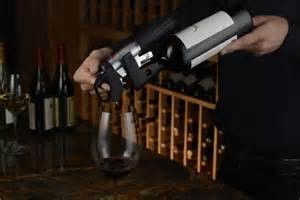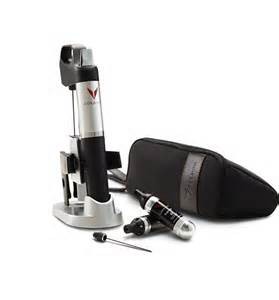 The Coravin has arrived! Ordering wine by the glass at many restaurants can sometimes be frustrating. Pedestrian selections at high markups have generally made it more economical to order an entire bottle rather than two or three glasses, but that’s the point. Restaurants want to sell you a bottle, not a glass.
The Coravin has arrived! Ordering wine by the glass at many restaurants can sometimes be frustrating. Pedestrian selections at high markups have generally made it more economical to order an entire bottle rather than two or three glasses, but that’s the point. Restaurants want to sell you a bottle, not a glass.
In restaurants that are more serious about wine, though, by-the-glass programs have evolved significantly in the last decade, offering customers many more choices than the ubiquitous chardonnay or pinot noir.
While wines by the glass are almost never worth the markup in a straight up monetary sense, sommeliers have sought different ways to add value to the purchase. More and more restaurants now offer keg wines, for example, which can help preserve young wines that may otherwise begin to decay if left in open bottles.
Now a new device, the Coravin, has arrived that may revolutionize the sorts of wines that restaurants can make available by the glass. The Coravin seems to solve a problem that has bedeviled humanity since the first wine was stored in urns, namely, how do you preserve wine once a container is opened, exposing it to oxygen, its archenemy?
The keg system addresses this issue, though in an ungainly way. It uses a gas like nitrogen to both push the wine from the keg to the tap and then to occupy the empty space within the keg, thereby preventing oxidation.
But this is good only for relatively simple wines that are meant to be consumed young and can be packaged in kegs by the producers. What about fine wines that benefit from extended bottle aging?
Over the years, many systems have been tried, from the simple VacuVin, a device for pumping air out of an opened wine bottle, to complex refrigeration and preservation systems meant to extend the life of bottles once the corks have been popped. For one reason or another, none have succeeded.
A long, thin, hollow needle is inserted through the foil and cork into the bottle. Then, argon (an odorless, tasteless, harmless inert gas) is pumped  through the needle, creating pressure within the bottle that pushies wine back out through the needle. When the desired amount is poured, the needle is withdrawn, leaving the argon in place of the wine, which prevents oxidation. The cork reseals itself, much like skin and tissue after an acupuncture needle is removed. It will not work on a bottle sealed by screw cap or an artificial cork (duh).
through the needle, creating pressure within the bottle that pushies wine back out through the needle. When the desired amount is poured, the needle is withdrawn, leaving the argon in place of the wine, which prevents oxidation. The cork reseals itself, much like skin and tissue after an acupuncture needle is removed. It will not work on a bottle sealed by screw cap or an artificial cork (duh).
Through the use of the Coravin, many restaurants and wine bars have gained the ability to offer high end wine by the glass without the fear of wasting the remaining wine in the bottle if only one glass is ordered in a night.
Does the Coravin have its drawbacks? Yes. It’s not cheap. At $299 retail for the device alone, it’s an investment for true wine enthusiasts or those who will use it for professional reasons. And the cost doesn’t stop there: the nitro capsules used by the Coravin run around $8 apiece, with each capsule capable of supporting around fifteen 5 ounce pours. Does it have its benefits? Oh, yes. Aching to pair an amazing Borolo with your steak, but everyone else at your table is looking at the Chardonnay? If your restaurant has a Coravin program, you likely can! That bottle of 2004 Napa Cab you’ve been saving for a group dinner to open? Have a glass by yourself tonight. No waiting. And the rest of the wine will remain safe until you need it.
In conclusion, the Coravin opens up many possibilities for the wine world, all without ‘opening’ a single bottle of wine. So pour yourself an amazing glass tonight. You deserve it. I know I do.


